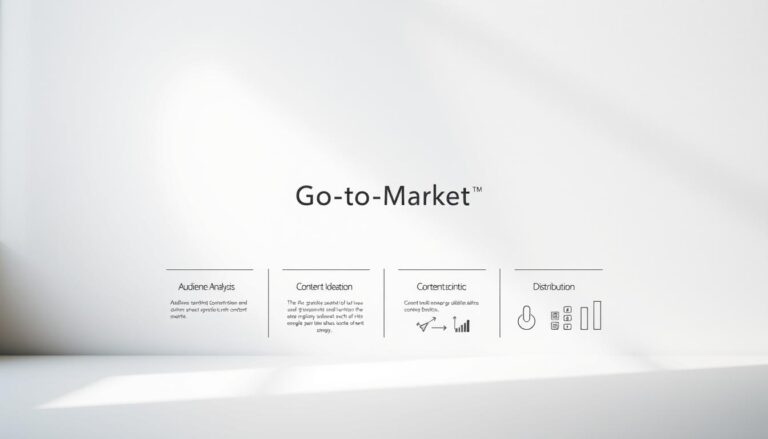Using predictive sales pipeline forecasting is essential. It’s key for growth and staying ahead. By using advanced sales forecasting techniques, companies understand market trends better. They can also predict future sales more accurately. This makes a big difference in planning and making big decisions. Gartner highlighted a trend: by 2025, many will still rely on guesses, not data. It’s time for businesses to use smart, AI-based forecasting.
Monte Carlo simulations are a powerful forecasting tool. They help by looking at many possible sales outcomes. When paired with AI and CRM data enhancement—like BoostUp offers—forecasts become much more accurate. This method looks at deal sizes, when deals will close, and how often leads turn into sales. This helps companies plan better, use their resources well, and sell more.
Key Takeaways
- Embrace predictive analytics and AI to enhance accuracy in sales forecasting and remain competitive.
- Leverage techniques such as Monte Carlo simulations to predict sales outcomes and understand market dynamics.
- Benefit from tools like BoostUp’s Predictive Sales Analytics Platform for detailed insights and risk management.
- Recognize the importance of high-quality data and the ability for real-time adjustments in forecasting models.
- Understand the broad impact of accurate sales forecasting on functions such as budgeting, staffing, and marketing.
Understanding Predictive Sales Pipeline Forecasting
Sales are changing fast because of new technologies. Tools like predictive modeling, sales forecasting, and pipeline management software are changing the game. They help sales teams plan better, adapt to market changes, and hit their targets.
Definition and Importance
Predictive sales pipeline forecasting uses old sales data, market trends, and the current pipeline. It does this through strong predictive modeling and machine learning. Its main goal is to give sales leaders the info they need to make smart decisions and plan strategies. This method reduces uncertainty in sales, giving companies an advantage in their markets.
Key Benefits for Sales Teams
Using pipeline management software in daily sales tasks offers many benefits:
- Accuracy in Sales Predictions: AI-driven predictive modeling improves forecasting. In fact, 41% of teams see big benefits after they start using it.
- Enhanced Resource Management: Advanced analytics help spread resources evenly. They show which deals are likely to succeed, improving how things run.
- Risk Reduction: Predictive insights point out dangers in the sales process. This lets teams handle problems before they disrupt the pipeline.
- Agility in Decision Making: Having up-to-date data lets sales managers make quick, smart choices. These match short-term needs and long-term goals.
Predictive modeling for sales helps not just big companies, but also smaller ones. It makes high-level analysis available to everyone. Using these tools makes work flow smoother, makes sales processes clearer, and boosts growth. It does this by giving sales teams deep insights to act on.
Elements of a Successful Forecasting Model
To have a winning sales strategy, you need accurate forecasts. This comes from a good forecasting model. Today, AI and predictive analytics are key in sales for this reason.
Data Collection and Analysis
Collecting data well is the start of predictive analytics for sales. With old data and new insights, companies can guess future sales better. They use different models to understand complicated data, helping predict what customers will want.
Key Performance Indicators (KPIs)
It’s important to watch the right KPIs to make forecasts more accurate. Key indicators include how many leads become sales, the average size of deals, and how long sales take. These help measure if sales tactics work and guide future choices.
Utilizing Technology and Software
Using tech makes forecasting more effective and accurate. CRM systems and other tools with AI for sales forecasting handle big data easily, making predictions better.
| Forecasting Model | Key Characteristics | Applicability |
|---|---|---|
| Time Series Analysis | Uses historical data to predict future events based on identified patterns. | Suitable for businesses with cyclical sales patterns. |
| Regression Analysis | Examines the relationships between variables to forecast future sales. | Effective in environments with clear influencing factors on sales. |
| AI-Powered Forecasting | Leverages machine learning to predict sales, adjusting dynamically to market changes. | Best for dynamic markets with constantly evolving consumer behaviors. |
By using these elements, the sales forecasting process becomes better and keeps up with changing markets.

Common Techniques in Predictive Forecasting
Predictive forecasting is key in today’s business world. It uses complex methods to forecast sales accurately. By integrating predictive modeling for sales and predictive analytics for sales, companies in finance, retail, and manufacturing can predict market needs. This helps them adjust their strategies to meet those needs.
Regression Analysis
Regression analysis is crucial in predictive analytics for sales. It looks at how sales outcomes relate to variables like marketing or the economy. By understanding these relationships, companies can make better choices to increase their profits.
Time-Series Analysis
Time-series analysis is essential for interpreting sales data over time. It looks at data points in chronological order to find patterns and trends. With methods like ARIMA models and exponential smoothing, AI-powered sales forecasting becomes more accurate and reliable.
Machine Learning Approaches
Machine learning is at the core of modern predictive modeling for sales. It turns large datasets into useful insights. With techniques like gradient boosting and random forests, forecasting models improve as they get more data. This constant improvement helps businesses stay competitive.
Together, these methods provide a strong foundation for AI-powered sales forecasting. They mix traditional statistics with the latest in machine learning. This gives businesses a detailed picture of what to expect in sales. As AI continues to evolve, predictive sales forecasting will become even more precise. It’s becoming essential for strategic planning.
Building an Effective Sales Pipeline
It’s vital to create an efficient sales pipeline for better sales team performance. Using tools like sales forecasting tool, pipeline management software, and sales forecasting AI makes strategies more agile and based on data. This way, sales pipeline predictions become precise and align with business goals.
Identifying Stages of the Pipeline
An effective pipeline covers several steps, from first contact to closing the deal. Knowing these stages helps track progress and spot problems. Tools like pipeline management software allow detailed analysis at every step, catching every opportunity.
Sales expert Jeff Hoffman suggests viewing the pipeline as a wide-mouth glass, not a narrow funnel. This view helps better manage flow and stages, making it more effective.
Aligning Sales Strategies with Forecasts
Adding sales forecasting AI to the mix lets businesses tailor their strategies with predictive analytics. This is key for planning and using resources well. Such robust pipeline management means firms can handle up to a 40% increase in leads without dropping performance or quality.

Companies with a strong grip on optimized sales pipeline prediction see big benefits. Data-driven tactics, backed by analytics and forecasts, have boosted revenues by 28% for those companies.
Here’s a table comparing essential metrics to show how good pipeline management impacts success:
| Metric | Impact Level | Improvement Percentage |
|---|---|---|
| Lead Volume Management | High | 40% |
| Revenue Growth | Significant | 28% |
| Lead Conversion Rates | Improved | 25% |
| Sales Cycle Length | Decreased | 15% |
Businesses should always aim for improvement and adapt based on new insights. This approach sharpens sales forecasting and boosts sales efforts, securing success in the long run.
Challenges in Predictive Sales Forecasting
Predictive sales forecasting that uses AI is vital for improving how companies run and their profits. But, it’s not easy to make these forecasts useful immediately. There are many hurdles to turn them into plans that work.
Data Quality and Sources
The data’s quality and where it comes from are big issues for sales forecasting AI. When you mix data from CRM systems with email interactions, the quality gets better. This is crucial for AI models to be strong. However, problems like biased data and not having enough old data can mess up the AI’s predictions.
Cleaning the data well to get rid of errors and noise is key to making forecasts more accurate. Looking closely at how CRM systems are used can make a big difference. You can find out how to tackle these problems by getting advice from experts here.
Resistance to Change in Sales Teams
Sales teams often don’t want to change from the old ways of forecasting to new, AI-based ones. Moving to predictive sales pipeline forecasting means both new tech and a new way of thinking. To solve these worries, it’s important to show how AI methods can make things better, like making predictions more right, saving time, and boosting sales.
Offering training and showing examples of success can ease doubts and get people on board. To understand more about this challenge, click here.
| Factor | Impact | Strategy |
|---|---|---|
| Data Bias | Skews predictions | Regular data audits & bias education |
| Lack of Historical Data | Limits model training | Integrating broader industry data |
| Resistance to Adoption | Delays implementation | Incentivizing accurate forecasts |
Even with these issues, the way we forecast sales is changing a lot because of predictive analytics. With a good plan to take on these problems, companies can really benefit from AI-powered sales forecasting. This can help them stay ahead in a tough market.
Best Practices for Implementation
The world of sales keeps changing. It’s important to use advanced sales forecasting techniques correctly. Knowing how to set up and keep a predictive sales pipeline forecasting system is key. It makes predictions sharper and gives sales teams valuable insight. Here, we’ll talk about the best ways to start and make these systems work well.
Continuous Improvement and Monitoring
To get forecasts right, you need constant updates and monitoring. Use a sales forecasting tool tailored to match every deal’s details. Forecasts have to change as data evolves. Combining past financial data with current market trends makes forecasts more accurate. This keeps your business ready for any market changes.
Training and Developing Sales Personnel
Training your sales team well is a must. They need to understand how to use forecasting tools fully. They should know how to enter data and understand complex forecasts. This way, they can use the system well and create a culture focused on data in sales.
Leveraging Insights for Strategic Decision-Making
Using predictive sales data is key in planning. Good forecasting lets you get ahead of market changes and use resources wisely. It’s about more than guessing sales. It helps your business save money, reduce risks, and earn more. Sales teams need to use these forecasts to plan better and do their best.
FAQ
What is predictive sales pipeline forecasting?
Predictive sales pipeline forecasting uses data analytics to estimate future sales. This method helps with strategic planning. It also optimizes sales predictions.
How do you use advanced sales forecasting techniques?
Advanced techniques use historical data and market trends. They include regression analysis and machine learning. These are used in software to improve sales predictions.
Why is predictive sales pipeline forecasting important?
This forecasting method is critical because it is based on data. It helps in planning and making strategic decisions. It also helps companies adapt to market trends quickly.
What are the key benefits of predictive sales pipeline forecasting for sales teams?
Sales teams get a lot of benefits, like enhanced sales prediction accuracy. This leads to better resource allocation. It also helps in identifying issues in the sales pipeline early.
What role does data collection and analysis play in predictive sales forecasting?
Data collection and analysis are crucial. They provide information for building accurate models. They help in predicting trends and recognizing sales influencers.
Why are Key Performance Indicators (KPIs) essential in forecasting models?
KPIs show how well sales activities are doing. They include conversion rates and average deal sizes. They help make forecasts more accurate.
How can technology and software optimize predictive sales forecasting?
Technology like AI tools and CRM platforms help track sales. They automate analysis and offer intelligent insights. This reduces errors significantly.
How is regression analysis used in predictive sales forecasting?
Regression analysis looks at relationships between sales outcomes and factors like marketing spend. It helps make forecasts more accurate.
What is the benefit of time-series analysis in forecasting?
Time-series analysis is useful for spotting patterns over time. It helps in planning based on past sales data.
Why are machine learning approaches becoming more prevalent in sales forecasting?
Machine learning can handle vast amounts of data and learn continuously. It identifies patterns and adapts to new information quickly.
What are the stages of an effective sales pipeline?
An effective pipeline has several stages from lead generation to sale closure. Understanding these stages improves sales opportunity management.
How can sales strategies be aligned with forecasts?
Aligning strategies with forecasts means using predictions to guide sales activities. It ensures resources are used where they’re needed most.
What challenges are faced regarding data quality in predictive forecasting?
High data quality is essential for good forecasts. Challenges include inconsistent data and incomplete data sets. Addressing these issues is key.
How can sales teams overcome resistance to change when adopting predictive forecasting?
Sales teams can highlight predictive forecasting’s benefits like greater accuracy. Training helps ease the transition.
Why is continuous improvement and monitoring necessary in predictive forecasting?
Continuous improvement keeps forecasts accurate and relevant. Adjusting models based on new data is crucial.
How can sales personnel be effectively trained for predictive forecasting?
Sales personnel should learn about forecasting tools and data accuracy. Ongoing support enhances their skills.
Why is leveraging insights for strategic decision-making important?
Leveraging insights helps businesses respond to market changes. It fosters innovation and competitive advantages.



